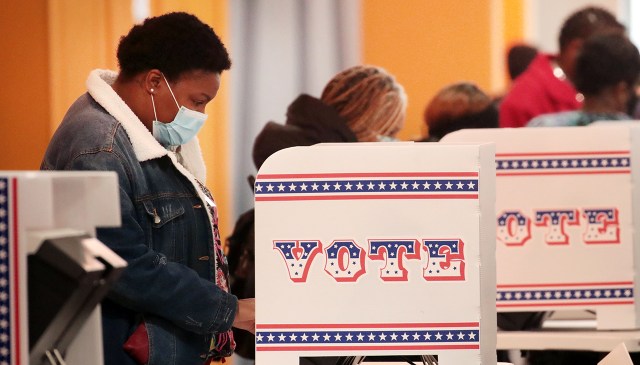As Election Day draws closer, Americans are being inundated with polls about the state of the presidential race. And understandably, many are wondering whether polls can be trusted after Donald Trump’s surprise victory in 2016.
A better question to ask may be what, exactly, are we trusting polls to do? If the answer is to predict the future, then trust in polls is misplaced. But if the answer is to reveal the public’s priorities and values – and why people vote the way they do – then polls are the best tool.
Four years ago, Trump won the White House despite trailing in most national surveys at the time. Several factors explain this disconnect. For one thing, presidents are chosen through the Electoral College, not the popular vote, and national surveys can’t always pick up on state-level dynamics. (Nationally, surveys in 2016 were quite accurate by historical standards.) Polls in some key Midwestern battleground states overstated support for Hillary Clinton and understated support for Trump by not correcting for having too many college graduates in their samples. And undecided voters in key states appear to have swung toward Trump in the race’s final days – a shift that went unnoticed because few polls, if any, were in the field at the time.
Some of these polling issues may have been unique to 2016. But others are constants that Americans would do well to keep in mind this year, particularly given the historic uncertainty caused by the coronavirus pandemic.
First and foremost, polls are snapshots in time. The results of any preelection survey will depend heavily on when it was fielded. Due to COVID-19, more than 78 million Americans have already cast their ballots this year, which means that many “preelection polls” are actually “mid-election polls” instead.
Historically, polls tend to be highly accurate when measuring public attitudes, but less accurate when measuring public behaviors.
Another polling challenge is determining whether people who say they will vote actually end up doing so. Historically, polls tend to be highly accurate when measuring public attitudes, but less accurate when measuring public behaviors. The pandemic has made this long-standing challenge even more stark by disrupting the campaign and the mechanics of casting a ballot. Turnout models based on Americans’ past behavior may well fail because 2020 isn’t like previous years.
The public has also long been conditioned to expect more certainty than preelection polls can realistically provide. Attention is often focused on the “horse race” – that is, which candidate is ahead and by how much – while less attention is paid to potential sources of polling error. Expectations are heightened further by so-called “polls of polls,” in which aggregate results from many surveys create an illusion of precision that really doesn’t exist. Then there’s the basic human desire for certainty, especially during an uncertain, anxious time like this one.
Good preelection polls try to get inside people’s heads. They attempt to understand the reasoning behind Americans’ values, beliefs and concerns.
So what do surveys do well? Good preelection polls try to get inside people’s heads. They attempt to understand the reasoning behind Americans’ values, beliefs and concerns. They explore how voters are reacting to major events such as the pandemic and economic downturn; how they feel about the candidates and policies; and which factors are motivating them to vote for a particular candidate, or whether to vote at all.
Perhaps the greatest value of surveys emerges after the election. It’s typical for winning candidates to point to the results and claim a mandate based on their interpretation of public will. But while elections are rightly the foundation of our democracy, they are imperfect measures of public sentiment. Not all Americans participate in elections: In 2016, only around 61% of voting-age citizens cast a ballot. And those who do vote may not like the (often-binary) choices on their ballot – or agree with their candidate on all the issues. Good public opinion polls are a necessary complement to elections to get a representative cross-section of what the entire public thinks, and to be sure the public’s real priorities are registered.
As Americans, we need to summon patience, accept the uncertainty of the moment and wait for election results and rigorous polling data to tell us what the voters decided and why.
A record share of voters said in a summer survey that it really matters who wins the 2020 election, and with that high level of engagement comes an understandable desire for certainty. But on the night of Nov. 3, Americans will be searching for hard data that may not exist. Millions of mail-in votes will need to be counted, even as exit polls – which traditionally provide important insights about where an election may be headed – will face unprecedented challenges. As Americans, we need to summon patience, accept the uncertainty of the moment and wait for election results and rigorous polling data to tell us what the voters decided and why.

"What" - Google News
October 30, 2020 at 12:10AM
https://ift.tt/3oD4DAt
What we can trust 2020 election polls to tell us - Pew Research Center
"What" - Google News
https://ift.tt/3aVokM1
https://ift.tt/2Wij67R
Bagikan Berita Ini
















0 Response to "What we can trust 2020 election polls to tell us - Pew Research Center"
Post a Comment